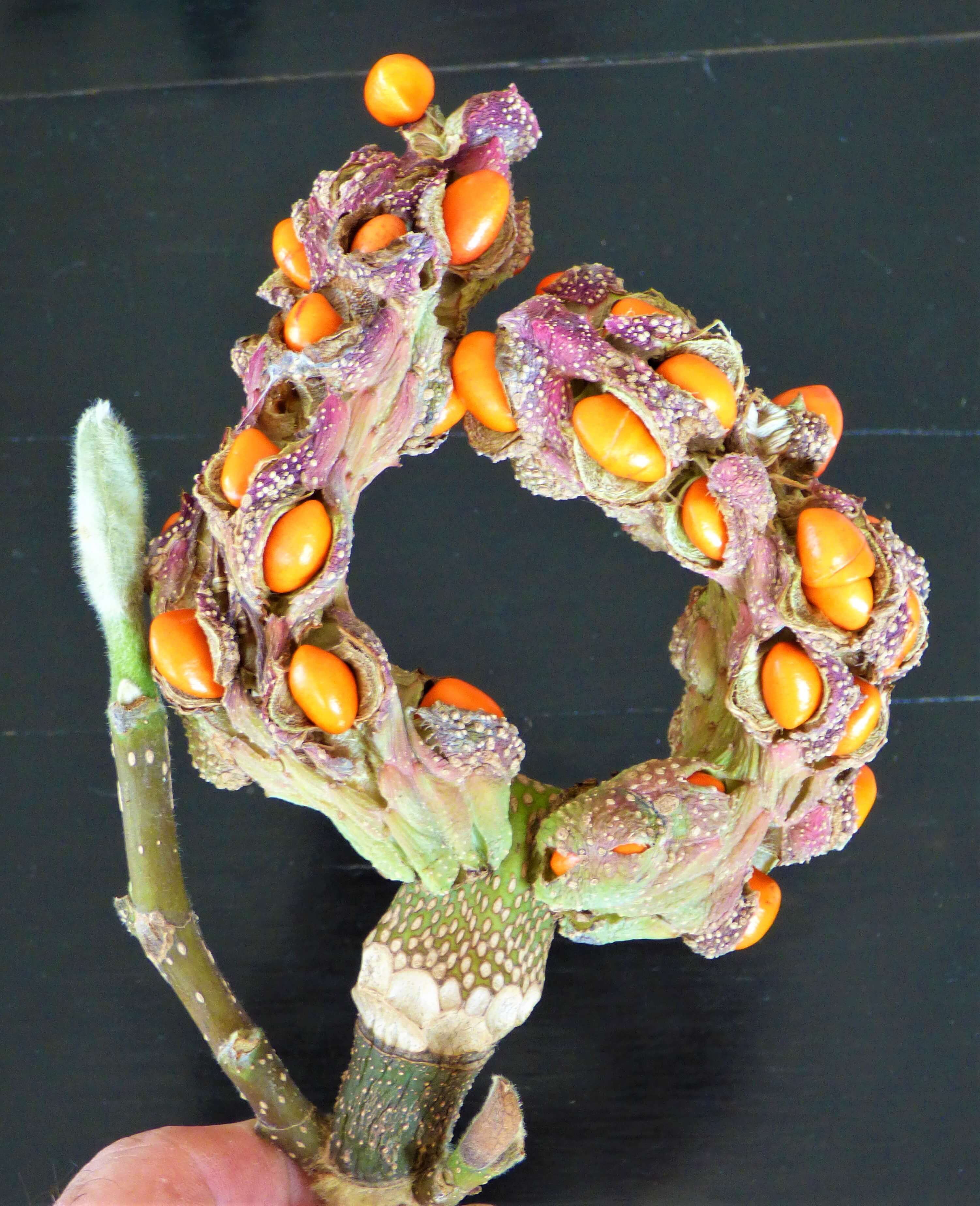With Halloween fast approaching, I thought I would take you into the fascinating world of plant mutations. Over my many years of experience as an estate gardener, landscaper, and nursery manager I have seen a handful of these, but none were as breath-taking as the English Daisy (Bellis perennis) with a fasciated flower that seemed to be smiling right back at me from its four-inch pot. To be honest, it was a little more unsettling than our Venus Fly Traps (Dionaea muscipula) with their somewhat predictable closing jaws because I had never seen anything quite like it before, and this new incarnation in no way resembled the original form.
There are a number of reasons for fasciation, a condition that causes flattened stems or fused flowers, including bud or tip damage (from insects, animals, or hard frosts), viral and bacterial infections, chemical damage (usually from herbicides), or even mechanical abrasions. This causes the growth from the bud to mutate. During my time as a gardener, I have seen transfigured Spanish Lavender, Dusty Miller, Veronica, and Gerberas. The Rudbeckias in particular are a little more dramatic when fasciated as they tend to develop something reminiscent of a Mohawk haircut, with a prominent elongated central cone flanked by stunted flower petals. Perhaps the only mutant that came close to the Bellis for sheer bravado was an Electric Daisy (Acmella oleracea) with fused flowers that looked like four eyeballs glued together.
The other freaks of nature that frequent the garden centre are samples of plants brought to me with very unusual growth abnormalities. Although these may appear quite strange, most of them have a simple explanation rooted in natural phenomena, such as weather or insects. The most common by far is Peach Leaf Curl (Taphrina deformans) which exhibits as thick, almost succulent-like foliage that is both distorted and tinged red. The cause is a fungus triggered by rain. The solution is to simply grow a resistant variety such as ‘Frost’ or train your Peach espalier-style under the south eave of the house where it can stay dry. Similarly, Pear Trellis Rust develops as hairy bright orange welts on the leaves of fruiting or flowering Pear (Pyrus calleryana) but usually causes no long-term damage. The quick fix here is to remove any badly infected leaves (off small trees) before mid-August to prevent it from spreading to the alternate hosts, which are Junipers, without which the fungus can’t complete its life cycle. Perhaps a little more ominous-looking are Mossy Rose Galls, which can often be found as four-inch-wide hairy red-tinged balls growing on the stems of native (R. canina), rugosa, or some old garden roses. These are actually wasp larvae (Diplolepsis rosae) developing within the distorted but protective plant tissue. These can be pruned out but they often do minimal damage to the rose, so you can enjoy a real ‘freak of nature’ without losing too many flowers. Last but not least on my list of eye-catching pests are gall mites which are quite common on Sycamore Maples (Acer pseudoplatanus). The symptoms here are a bit alarming but also somewhat attractive, with green leaves being speckled with bright red pimples. These are caused by mites that overwinter in bark crevices and migrate to the undersides of emerging leaves in spring to feed and lay their eggs. Although unsightly to some, gall mites rarely cause long-term damage or affect the vigour of mature trees, so intervention isn’t always necessary.
Reversion is another freaky phenomenon that some of us might encounter in our gardens. Commonly seen in flowers such as the Tulip ‘Akebono’, Chrysanthemum ‘Green Mist’ and Hibiscus syriacus ‘China Chiffon’ shown here, all of which are exhibiting spots or mutations. In the case of the Hibiscus, we can see the flower showing traits of the ‘Lavender Chiffon’ variety (remember, many of our new plants come from these natural mutations) while the ‘Akebono’ Darwin tulip is bearing a single petal that much resembles a Parrot or Green type. Occasionally there are shrubs with somewhat stable two-tone reversions made available, such as the rare lavender-white Rhododendron indicum var sai no matsuzaka. More common are grafted flowering cherries with both pink and white flowers such as the Prunus ‘Kwanzan’ shown being overwhelmed by the white-flowering understock. Perhaps the best example of reversion I can share is a Variegated Norway Maple (Acer platanoides ‘Drummondii’) planted along my commute on Old Dewdney Trunk Road that I have been watching for over twenty years now. At first, there was only one branch that had reverted to plain green in the lower canopy, but over two decades the faster-growing reversion has overtaken the crown to the point where there is only a solitary variegated branch left near the top of the tree. The lesson is that if you want to keep your variegation, be sure to prune out any green reversions as soon as they appear.
I’ll leave you with the rather strange Magnolia seed pod looking somewhat like orange aliens popping out of their purple eggs, which despite appearances is quite normal.

Before I go, I would like to remind you to be extra-generous with the candy this Halloween as it has been a tough year to be a kid with all the COVID closures.


